Themed collection 2019 PCCP HOT Articles

Strategies for computational design and discovery of two-dimensional transition-metal-free materials for electro-catalysis applications
Two novel strategies for computational design and discovery of two-dimensional transition-metal free electro-catalysts are reviewed.
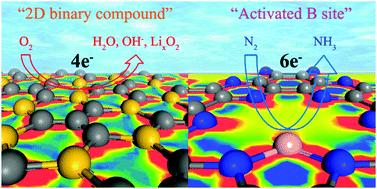
Phys. Chem. Chem. Phys., 2019,21, 25535-25547
https://doi.org/10.1039/C9CP04284A
Surface nanostructuring via femtosecond lasers
Periodical structures induced by pulsed lasers are a unique phenomenon when pulsed lasers irradiate on some material surfaces.
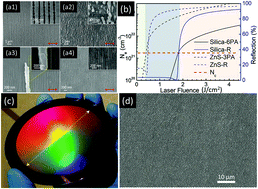
Phys. Chem. Chem. Phys., 2019,21, 24262-24268
https://doi.org/10.1039/C9CP05351D
Strategic planning of proteins in ionic liquids: future solvents for the enhanced stability of proteins against multiple stresses
Ionic liquids (ILs) represent as solvents or co-solvents for protein stabilization and refolding. Thus, ILs are replacement to toxic organic solvents in chemical, biotechnology and biomedical applications.
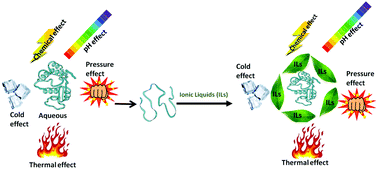
Phys. Chem. Chem. Phys., 2019,21, 23269-23282
https://doi.org/10.1039/C9CP04772G
Glass polymorphism and liquid–liquid phase transition in aqueous solutions: experiments and computer simulations
Water is an intriguing substance. It shows sharp and reversible transitions between amorphous ices and, possibly, a liquid–liquid phase transition. Here, we discuss how this behavior is altered by the addition of solutes, such as salts and alcohols.
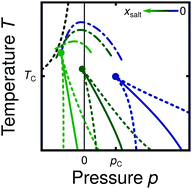
Phys. Chem. Chem. Phys., 2019,21, 23238-23268
https://doi.org/10.1039/C9CP02953B
Structure of the aqueous electron
A cavity or excluded-volume structure best explains the experimental properties of the aqueous or “hydrated” electron.
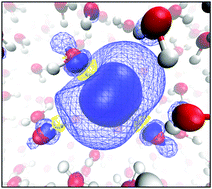
Phys. Chem. Chem. Phys., 2019,21, 20538-20565
https://doi.org/10.1039/C9CP04222A
Scanning probe microscopy for real-space observations of local chemical reactions induced by a localized surface plasmon
Scanning probe microscopy techniques providing mechanistic insights into chemical reactions induced by localized surface plasmon on the basis of real-space observations.
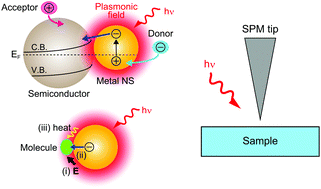
Phys. Chem. Chem. Phys., 2019,21, 19720-19731
https://doi.org/10.1039/C9CP02100K
Characterization of chemically modified gold and silver clusters in gas phase
This perspective summarizes our recent efforts in the application of gas-phase characterization methods to ligand-protected Au/Ag clusters chemically synthesized with atomic precision.
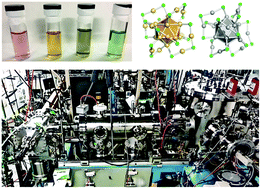
Phys. Chem. Chem. Phys., 2019,21, 17463-17474
https://doi.org/10.1039/C9CP02622C
Ultrafast probes at the interfaces of solar energy conversion materials
Transient reflection, photoreflectance and attenuated total reflection spectroscopy are developed to understand the ultrafast interfacial dynamics of solar conversion materials.
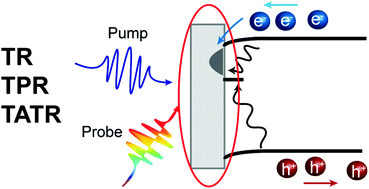
Phys. Chem. Chem. Phys., 2019,21, 16399-16407
https://doi.org/10.1039/C9CP02768H
Ionic-surfactants-based thermotropic liquid crystals
Ionic surfactants can be combined with various functional groups through electrostatic interaction, resulting in a series of thermotropic liquid crystals (TLCs).
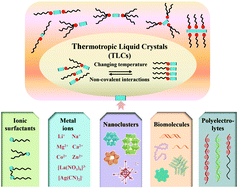
Phys. Chem. Chem. Phys., 2019,21, 15256-15281
https://doi.org/10.1039/C9CP02697E
Photoinduced C–H bond fission in prototypical organic molecules and radicals
We survey and assess current knowledge regarding the primary photochemistry of hydrocarbon molecules and radicals.
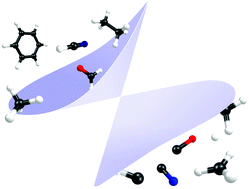
Phys. Chem. Chem. Phys., 2019,21, 13880-13901
https://doi.org/10.1039/C8CP07454B
Bayesian machine learning for quantum molecular dynamics
This article discusses applications of Bayesian machine learning for quantum molecular dynamics.
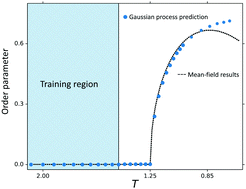
Phys. Chem. Chem. Phys., 2019,21, 13392-13410
https://doi.org/10.1039/C9CP01883B
Vibrational sum-frequency generation spectroscopy of electrode surfaces: studying the mechanisms of sustainable fuel generation and utilisation
The electrocatalytic oxidation of water coupled to the reduction of carbon dioxide, to make carbon based products, or the reduction of protons to provide hydrogen, offers a sustainable route to generating useful fuels.
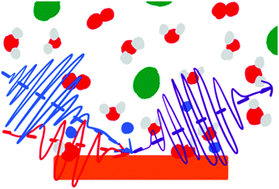
Phys. Chem. Chem. Phys., 2019,21, 12067-12086
https://doi.org/10.1039/C9CP02225B
2D oxides on metal materials: concepts, status, and perspectives
Two-dimensional oxide-on-metal materials: concepts, methods, and link to technological applications, with 5 subtopics: structural motifs, robustness, catalysis, ternaries, and nanopatterning.
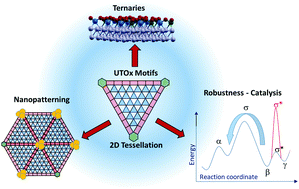
Phys. Chem. Chem. Phys., 2019,21, 11510-11536
https://doi.org/10.1039/C9CP00972H
Two-dimensional supramolecular crystal engineering: chirality manipulation
This review summarizes the recent progress in chirality manipulation on 2D supramolecular crystal engineering.
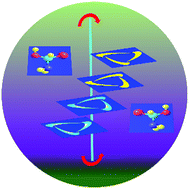
Phys. Chem. Chem. Phys., 2019,21, 11537-11553
https://doi.org/10.1039/C9CP02207D
Locality of conical intersections in semiconductor nanomaterials
We review recent efforts to model nonradiative recombination in semiconductor nanoparticles through conical intersections, focusing on the reasons for and consequences of the locality of such intersections.
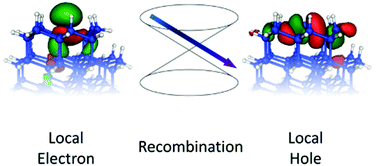
Phys. Chem. Chem. Phys., 2019,21, 10870-10878
https://doi.org/10.1039/C9CP01584A
Opportunities and challenges for electrochemistry in studying the electronic structure of nanocrystals
We review the state-of-the-art of determining the electronic structure of nanocrystals in thin films by electrochemistry and emphasize the benefits of correlating electrochemical with spectroscopic methods to this end.
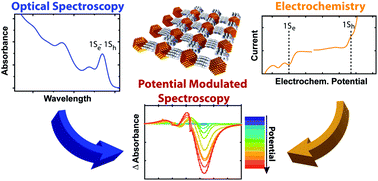
Phys. Chem. Chem. Phys., 2019,21, 8992-9001
https://doi.org/10.1039/C9CP00301K
Time-resolved radiation chemistry: femtosecond photoelectron spectroscopy of electron attachment and photodissociation dynamics in iodide–nucleobase clusters
The pump pulse initiates intracluster charge transfer, creating transient nucleobase anions that model DNA damage pathways induced by low-energy electron attachment.
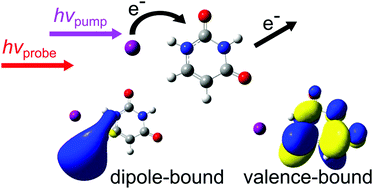
Phys. Chem. Chem. Phys., 2019,21, 7239-7255
https://doi.org/10.1039/C8CP07831A
Electrochemical hydrogenation of non-aromatic carboxylic acid derivatives as a sustainable synthesis process: from catalyst design to device construction
Electrochemical hydrogenation of a carboxylic acid using water as a hydrogen source is an environmentally friendly synthetic process for upgrading bio-based chemicals.
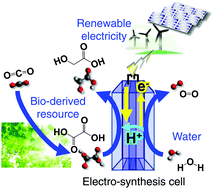
Phys. Chem. Chem. Phys., 2019,21, 5882-5889
https://doi.org/10.1039/C8CP07445C
Density-based descriptors and exciton analyses for visualizing and understanding the electronic structure of excited states
Quantum-chemical exciton analysis allows for quantitative, yet facile characterization of excited-state electronic structure and advanced multi-parameter benchmarking.

Phys. Chem. Chem. Phys., 2019,21, 2843-2856
https://doi.org/10.1039/C8CP07191H
Modulating the intrinsic reactivity of molecules through non-covalent interactions
Non-covalent interactions as tools for modifying molecular properties.
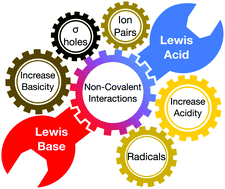
Phys. Chem. Chem. Phys., 2019,21, 2222-2233
https://doi.org/10.1039/C8CP06908E
The canonical behavior of the entropic component of thermodynamic effective molarity. An attempt at unifying covalent and noncovalent cyclizations
The statistically corrected entropic component of effective molarity (EMS*) complies with the “canonical” values expressed by the log plot of EMS* vs. the number n of single bonds in the ring product.
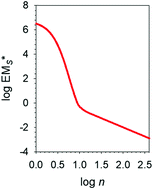
Phys. Chem. Chem. Phys., 2019,21, 955-987
https://doi.org/10.1039/C8CP06344C
Hydrogen tunnelling in the rearrangements of carbenes: the role of dynamical calculations
A tunnelling controlled reaction is studied with semiclassical transition state theory, rationalising the results of experiment.
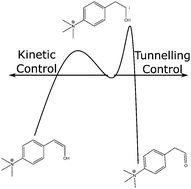
Phys. Chem. Chem. Phys., 2020,22, 962-965
https://doi.org/10.1039/C9CP06300E
Elucidating the structure and dynamics of CO ad-layers on MgO surfaces
The structure and dynamics of the ordered CO ad-layer on MgO surfaces is determined by combining theoretical quantum-mechanical calculations and experimental infrared spectroscopic measurements.
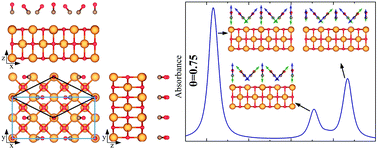
Phys. Chem. Chem. Phys., 2019,21, 26279-26283
https://doi.org/10.1039/C9CP05418A
Time-resolved Fourier-transform infrared spectroscopy reveals the hidden bimolecular process of the ferrioxalate actinometer
Step-scan FTIR-spectroscopy reveals the bimolecular reaction in the ferrioxalate photochemistry, which builds the molecular-level foundation of the Hatchard–Parker actinometer.
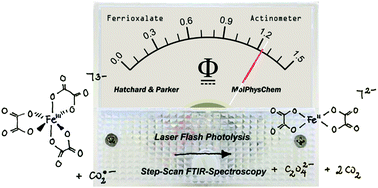
Phys. Chem. Chem. Phys., 2019,21, 23803-23807
https://doi.org/10.1039/C9CP05233J
Unique reactivity of B in B[Ge9Y3]3 (Y = H, CH3, BO, CN): formation of a Lewis base
Boron compounds usually exhibit Lewis acidity at the boron center due to the presence of vacant p-orbitals. But using Zintl-ion based groups (Ge9Y3, Y = H, CH3, BO, CN), we can alter Lewis acid nature of B to a Lewis base.
![Graphical abstract: Unique reactivity of B in B[Ge9Y3]3 (Y = H, CH3, BO, CN): formation of a Lewis base](/en/Image/Get?imageInfo.ImageType=GA&imageInfo.ImageIdentifier.ManuscriptID=C9CP04361F&imageInfo.ImageIdentifier.Year=2019)
Phys. Chem. Chem. Phys., 2019,21, 23301-23304
https://doi.org/10.1039/C9CP04361F
A multi-layer energy-based fragment method for excited states and nonadiabatic dynamics
We developed a multi-layer energy-based fragment (MLEBF) method within the many-body energy expansion framework.
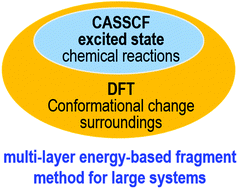
Phys. Chem. Chem. Phys., 2019,21, 22695-22699
https://doi.org/10.1039/C9CP04842A
Enhancement of electron accepting ability of para-benzoquinone by a single water molecule
Electron acceptors built upon the para-benzoquinone (pBQ) electro-phore are ubiquitous in nature.
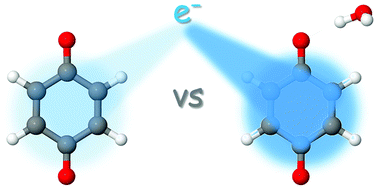
Phys. Chem. Chem. Phys., 2019,21, 21689-21692
https://doi.org/10.1039/C9CP04559G
Hydrate nucleation and growth on water droplets acoustically-levitated in high-pressure natural gas
We present the first quantitative measurements of hydrate formation probability, nucleation rate and growth on a water droplet suspended within a high pressure natural gas by acoustic levitation.
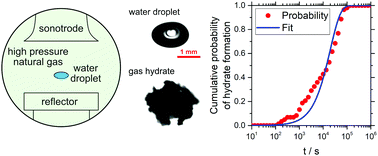
Phys. Chem. Chem. Phys., 2019,21, 21685-21688
https://doi.org/10.1039/C9CP04403E
Large volume liquid state scalar Overhauser dynamic nuclear polarization at high magnetic field
Dynamic Nuclear Polarization (DNP) can increase the sensitivity of Nuclear Magnetic Resonance (NMR), but it is challenging in the liquid state at high magnetic fields.
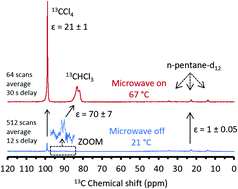
Phys. Chem. Chem. Phys., 2019,21, 21200-21204
https://doi.org/10.1039/C9CP02997D
Pyridine–acetaldehyde, a molecular balance to explore the n→π* interaction
Weak n→π* and C–H⋯O interactions determine the structure of pyridine–acetaldehyde adduct. The n→π* distance oscillates with the methyl group internal rotation which acts as a sort of molecular balance to explore the n→π* interaction energy.
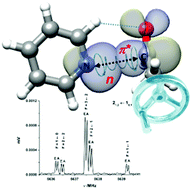
Phys. Chem. Chem. Phys., 2019,21, 20566-20570
https://doi.org/10.1039/C9CP04088A
How flexible is the disulfide linker? A combined rotational–computational investigation of diallyl disulfide
The symmetrically substituted diallyl disulfide adopts an asymmetric conformation in the gas phase, as observed in the rotational spectrum.
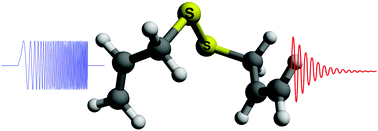
Phys. Chem. Chem. Phys., 2019,21, 19732-19736
https://doi.org/10.1039/C9CP02508A
Why is the cubic structure preferred in newly formed ice?
The structure of liquid water promotes the formation of ice in which the content of the cubic structure is higher than the content of the hexagonal structure.
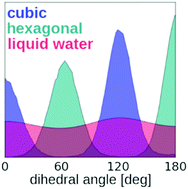
Phys. Chem. Chem. Phys., 2019,21, 18043-18047
https://doi.org/10.1039/C9CP03705E
Controlled deuterium labelling of imidazolium ionic liquids to probe the fine structure of the electrical double layer using neutron reflectometry
The electrical double layer structure formed in an ionic liquid electrolyte was determined by combining the neutron reflectivity and deuterium labelling techniques.
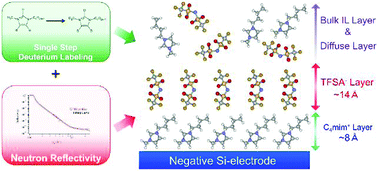
Phys. Chem. Chem. Phys., 2019,21, 17512-17516
https://doi.org/10.1039/C9CP02479D
Triplet dynamic nuclear polarization of nanocrystals dispersed in water at room temperature
Room-temperature triplet dynamic nuclear polarization (triplet-DNP) of nanocrystals dispersed in water is achieved for the first time.
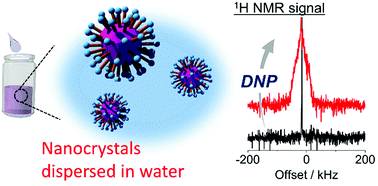
Phys. Chem. Chem. Phys., 2019,21, 16408-16412
https://doi.org/10.1039/C9CP03330K
New two-dimensional carbon nitride allotrope with 1 : 1 stoichiometry featuring spine-like structures: a structural and electronic DFT-D study
In this communication the prediction of a two-dimensional carbon nitride allotrope (CN) featuring a 1 : 1 stoichiometry is considered.
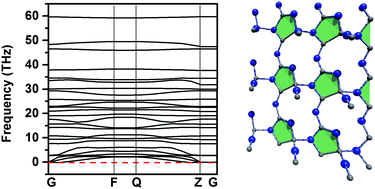
Phys. Chem. Chem. Phys., 2019,21, 15282-15285
https://doi.org/10.1039/C9CP02846C
Unusual temperature-sensitive excimer fluorescence from discrete π–π dimer stacking of anthracene in a crystal
An unusual blue shift in excimer fluorescence with increasing temperature was observed from a crystal with a discrete π–π anthracene dimer.
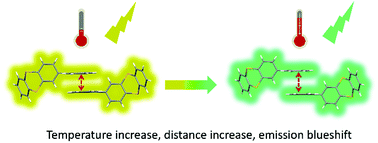
Phys. Chem. Chem. Phys., 2019,21, 14511-14515
https://doi.org/10.1039/C9CP02656H
Threshold photoelectron spectrum of the CH2OO Criegee intermediate
We present the photoelectron spectroscopy of the simplest Criegee intermediate, CH2OO, close to the first ionization energy.
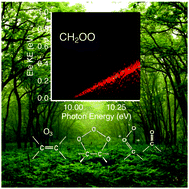
Phys. Chem. Chem. Phys., 2019,21, 12763-12766
https://doi.org/10.1039/C9CP02538C
Valuable structure-size relationships for tadpole-shaped single-chain nanoparticles with long and short flexible tails unveiled
Tadpole-shaped single-chain nanoparticles (TSCNPs) are useful soft building blocks for nanotechnology composed of a flexible polymer chain tethered to an intramolecularly folded single-chain nanoparticle.
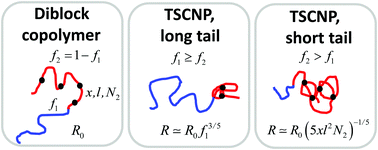
Phys. Chem. Chem. Phys., 2019,21, 10884-10887
https://doi.org/10.1039/C9CP01318K
Enhancing electrocatalysis for hydrogen production over CoP catalyst by strain: a density functional theory study
The facet-dependent strain effects on the hydrogen evolution reaction catalyzed by CoP were studied using density functional theory methods.
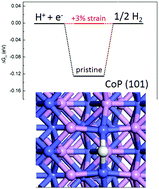
Phys. Chem. Chem. Phys., 2019,21, 9137-9140
https://doi.org/10.1039/C9CP00128J
Detailed electronic structure of a high-spin cobalt(II) complex determined from NMR and THz-EPR spectroscopy
Here we report a combined use of THz-EPR and paramagnetic NMR spectroscopy for obtaining a detailed electronic structure of a high-spin cobalt(II) complex.
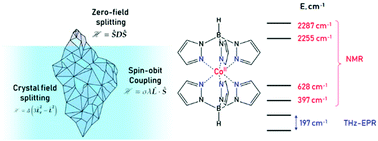
Phys. Chem. Chem. Phys., 2019,21, 8201-8204
https://doi.org/10.1039/C9CP01474H
Endohedral metal-nitride cluster ordering in metallofullerene–NiII(OEP) complexes and crystals: a theoretical study
The ordering of endohedral clusterfullerenes Sc3N@C80 and YSc2N@C80 co-crystallized with Ni(OEP) and isolated complexes with Ni(OEP) have been investigated theoretically.
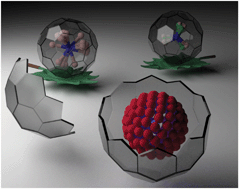
Phys. Chem. Chem. Phys., 2019,21, 8197-8200
https://doi.org/10.1039/C9CP00634F
Structural and magnetic studies of KOsO4, a 5d1 quantum magnet oxide
The quantum magnet KOsO4 has been characterized by a combination of X-ray and neutron diffraction techniques. This represents the first structural and magnetic characterization of a simple Os7+, S = 1/2 oxide system.

Phys. Chem. Chem. Phys., 2019,21, 7261-7264
https://doi.org/10.1039/C9CP00448C
Surface-mediated spin dynamics probed by optical-pump–probe scanning tunneling microscopy
In current materials science and technologies, surface effects on carrier and spin dynamics in functional materials and devices are of great importance.
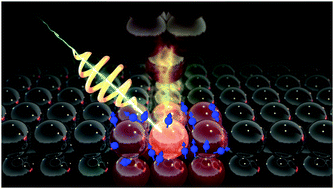
Phys. Chem. Chem. Phys., 2019,21, 7256-7260
https://doi.org/10.1039/C8CP07786J
Cu(II)-nanoparticle-derived structures under CO2 reduction conditions: a matter of shape
We investigate the structural evolution of Cu(OH)2 nanoparticle-derived electrodes under CO2 electroreduction conditions and its effect on their electrocatalytic performance.
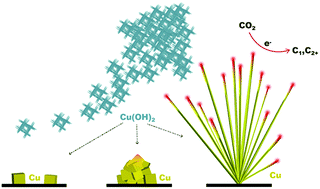
Phys. Chem. Chem. Phys., 2019,21, 5894-5897
https://doi.org/10.1039/C8CP07891B
Parahydrogen-induced polarization with a metal-free P–P biradicaloid
The activation of parahydrogen by a metal-free P–P biradicaloid leads to 1H and 31P nuclear spin hyperpolarization.
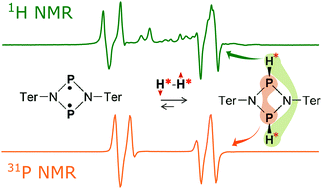
Phys. Chem. Chem. Phys., 2019,21, 5890-5893
https://doi.org/10.1039/C8CP07625A
The application of the surface energy based solubility parameter theory for the rational design of polymer-functionalized MWCNTs
Solubility parameter theories can be used to model the degree of polymer functionalization of MWCNTs in different solvent media.
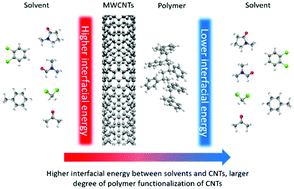
Phys. Chem. Chem. Phys., 2019,21, 5331-5334
https://doi.org/10.1039/C8CP07411A
Reaction of chloride anion with atomic oxygen in aqueous solutions: can cold plasma help in chemistry research?
The reaction between atomic oxygen and chloride anion in aqueous solutions exposed to cold plasma was investigated experimentally and computationally.
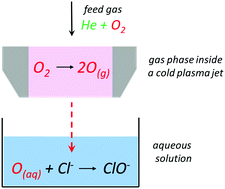
Phys. Chem. Chem. Phys., 2019,21, 4117-4121
https://doi.org/10.1039/C8CP07550F
High-resolution rotational Raman spectroscopy of benzene
A time-domain laser experiment resolved spectra for benzene with single-MHz resolution, a 100-fold improvement on literature data.
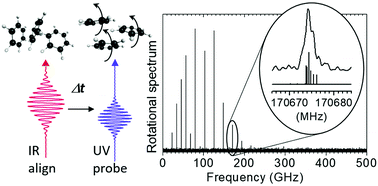
Phys. Chem. Chem. Phys., 2019,21, 2857-2860
https://doi.org/10.1039/C8CP07555G
Fullerene and endometallofullerene Kagome lattices with symmetry-forced spin frustration
Salts of fullerene C60˙− (1) and endometallofullerene Sc3N@Ih-C80˙− (2) radical anions with the Bu3MeP+ cation were obtained. These radical anions form Kagome lattices with equilateral fullerene triangles. The strong antiferromagnetic coupling of spins in 1 and 2 without magnetic ordering down to 1.5–1.9 K indicates strong spin frustration.
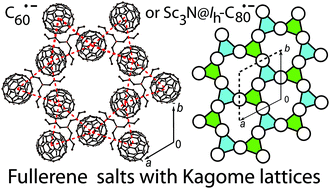
Phys. Chem. Chem. Phys., 2019,21, 1645-1649
https://doi.org/10.1039/C8CP07017B
Assessing the properties of supercritical water in terms of structural dynamics and electronic polarization effects
Evolution of water's structural dynamics from ambient liquid to supercritical dense liquid-like and dilute gas-like conditions.
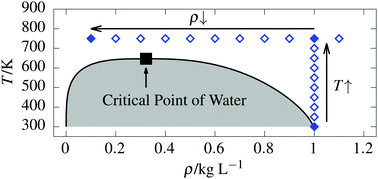
Phys. Chem. Chem. Phys., 2020,22, 10462-10479
https://doi.org/10.1039/C9CP05610F
Site dependent reactivity of Pt single atoms on anatase TiO2(101) in an aqueous environment
The TiO2–Pt–water interface is of great relevance in photocatalysis where Pt is widely used as a co-catalyst for enhancing hydrogen evolution in aqueous TiO2.
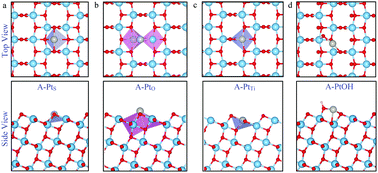
Phys. Chem. Chem. Phys., 2020,22, 10455-10461
https://doi.org/10.1039/C9CP05097C
Ion–ion interactions enhance aluminum solubility in alkaline suspensions of nano-gibbsite (α-Al(OH)3) with sodium nitrite/nitrate
Addition of NaNO2 and/or NaNO3 to the α-Al(OH)3–NaOH–H2O system leads to significant enhancement of α-Al(OH)3 solubility.
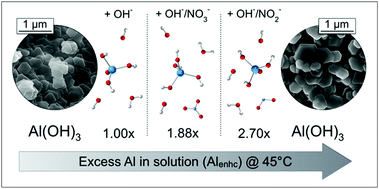
Phys. Chem. Chem. Phys., 2020,22, 4368-4378
https://doi.org/10.1039/C9CP05856G
A general topological network criterion for exploring the structure of icy nanoribbons and monolayers
We develop intuitive metrics for quantifying complex nucleating systems under confinement.
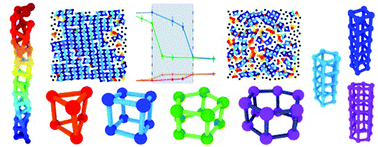
Phys. Chem. Chem. Phys., 2020,22, 3800-3808
https://doi.org/10.1039/C9CP04902A
Statistical molecular fragmentation: which parameters influence the branching ratios?
Our recently developed statistical model for molecular fragmentation (SMF) is used to study the decomposition of propane and to predict thermodynamically controlled yields of products as a function of excitation energy deposited into propane.
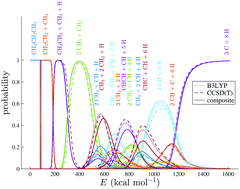
Phys. Chem. Chem. Phys., 2020,22, 3160-3172
https://doi.org/10.1039/C9CP05095G
Design of a liquid cell toward three-dimensional imaging of unidirectionally-aligned particles in solution using X-ray free-electron lasers
A liquid cell was designed for coherent diffractive imaging measurements at high tilt angles and tested at SACLA.
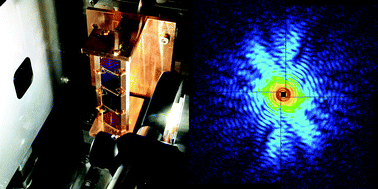
Phys. Chem. Chem. Phys., 2020,22, 2622-2628
https://doi.org/10.1039/C9CP03658J
Core–valence-separated coupled-cluster-singles-and-doubles complex-polarization-propagator approach to X-ray spectroscopies
The iterative subspace algorithm to solve the CCSD complex linear response equations has been modified to include a core–valence separation projection step to overcome convergence problems. Illustrative results are reported for XAS, XCD, XES and RIXS.
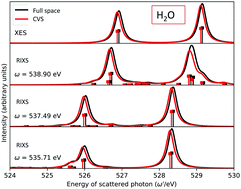
Phys. Chem. Chem. Phys., 2020,22, 2642-2647
https://doi.org/10.1039/C9CP03696B
Dynamical disorder and resonance energy transfer: a novel quantum-classical approach
A novel quantum-classical approach demonstrates that dynamic disorder, as induced by a liquid polar solvent, boosts RET efficiency.
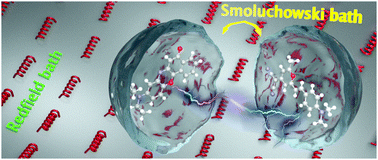
Phys. Chem. Chem. Phys., 2020,22, 1061-1068
https://doi.org/10.1039/C9CP06038C
Reduction of water-mediated repulsion drives poly(N-vinylcaprolactam) collapse upon heating
Thermo-sensitive aqueous polymers undergo a coil-to-globule transition on heating, with drastic chemical and structural changes. We performed molecular dynamics simulations for PVCL in water to study the driving forces for the polymer's collapse.
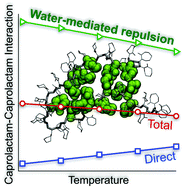
Phys. Chem. Chem. Phys., 2020,22, 1053-1060
https://doi.org/10.1039/C9CP05491J
The reduced cohesion of homoconfigurational 1,2-diols
Homochiral encounters of vicinal diols are blocked from relaxing to the heterochiral global minimum dimer structure in supersonic jet expansions.
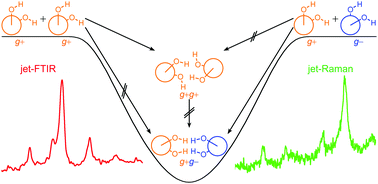
Phys. Chem. Chem. Phys., 2020,22, 1122-1136
https://doi.org/10.1039/C9CP04943F
Photoelectron spectroscopy of boron-containing reactive intermediates using synchrotron radiation: BH2, BH, and BF
Mass selected slow photoelectron spectra (SPES) of three boron-containing reactive species, BH2, BH, and BF were recorded by double imaging photoion–photoelectron coincidence spectroscopy (i2PEPICO) using synchrotron radiation.
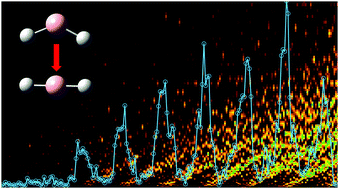
Phys. Chem. Chem. Phys., 2020,22, 1027-1034
https://doi.org/10.1039/C9CP06010C
Metallization and superconductivity in methane doped by beryllium at low pressure
Solid methane doped by beryllium is superconducting at low pressures and its critical temperature can reach 30 K.
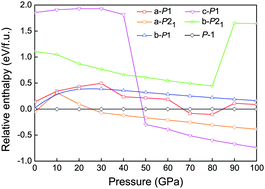
Phys. Chem. Chem. Phys., 2020,22, 1069-1077
https://doi.org/10.1039/C9CP06008A
Photochemistry of tris(2,3,5,6-tetrathiaaryl)methyl radicals in various solutions
A detailed mechanism of TAM photolysis was studied and includes photoionization of the TAM radical with the formation of carbocation and further conversion of the carbocation under aerobic conditions into quinone-methide and under anaerobic conditions supposedly into an aromatic carbene.
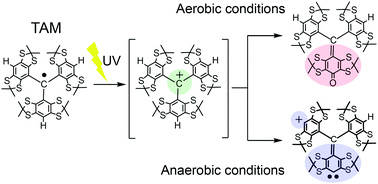
Phys. Chem. Chem. Phys., 2020,22, 1019-1026
https://doi.org/10.1039/C9CP06213K
Investigation of the mechanism of overall water splitting in UV-visible and infrared regions with SnC/arsenene vdW heterostructures in different configurations
SnC/As heterostructures in different configurations are extraordinary photocatalysts for water splitting even under infrared light.
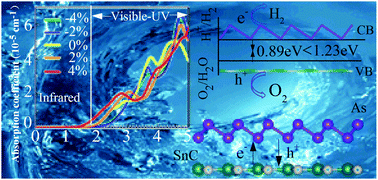
Phys. Chem. Chem. Phys., 2020,22, 1045-1052
https://doi.org/10.1039/C9CP05811G
Quantum tunnelling pathways of the water pentamer
Five tunnelling rearrangement pathways in water pentamer are responsible for the ground-state tunnelling splitting pattern of 320 states.
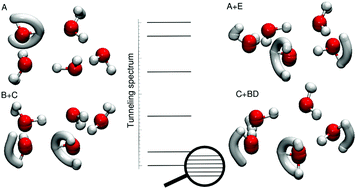
Phys. Chem. Chem. Phys., 2020,22, 1035-1044
https://doi.org/10.1039/C9CP05561D
Calculations on the unimolecular decomposition of the nerve agent VX
The thermal decomposition of VX has been studied computationally. The VX reactions have higher barriers and slower rates than the GB reaction. It is predicted that VX completely decomposes in 2 s at temperatures above 750 K.
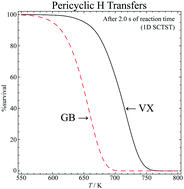
Phys. Chem. Chem. Phys., 2020,22, 564-574
https://doi.org/10.1039/C9CP05109K
Model systems for screening and investigation of lithium metal electrode chemistry and dendrite formation
A simple approach based on first principles leads to investigation of the origins of dendritic growth.
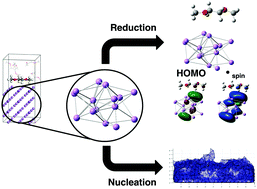
Phys. Chem. Chem. Phys., 2020,22, 575-588
https://doi.org/10.1039/C9CP06020K
Antiferromagnetic topological insulator MnBi2Te4: synthesis and magnetic properties
The synthesis of high quality MnBi2Te4 crystals as the first intrinsic antiferromagnetic topological insulator to unearth exotic topological quantum phenomena.
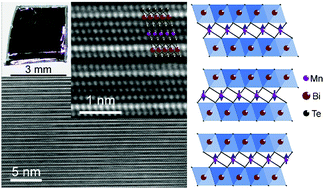
Phys. Chem. Chem. Phys., 2020,22, 556-563
https://doi.org/10.1039/C9CP05634C
The impact of photocatalytic paint porosity on indoor NOx and HONO levels
Photocatalytic materials are a potentially effective remediation technology for indoor air purification.
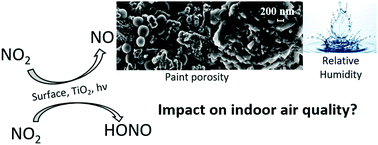
Phys. Chem. Chem. Phys., 2020,22, 589-598
https://doi.org/10.1039/C9CP05477D
Common structures of CO2 on structurally different coin metal surfaces
A disordered spacer layer (red) allows to form an ordered CO2 layer (green), which is not influenced by the substrate.
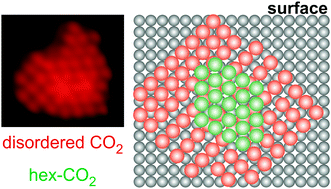
Phys. Chem. Chem. Phys., 2020,22, 497-506
https://doi.org/10.1039/C9CP05813C
Three-dimensional line edge roughness in pre- and post-dry etch line and space patterns of block copolymer lithography
In this work, we employ large-scale coarse-grained molecular dynamics (CGMD) simulations to study the three-dimensional line edge roughness associated with line and space patterns of chemo-epitaxially directed symmetric block copolymers.
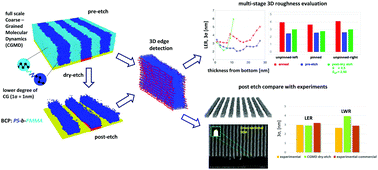
Phys. Chem. Chem. Phys., 2020,22, 478-488
https://doi.org/10.1039/C9CP05398K
About this collection
Welcome to our online rolling collection of the hottest work published in PCCP. Here we feature all the 2019 PCCP articles highlighted as HOT by the handling editor or our referees. Congratulations to all the authors whose articles are featured.